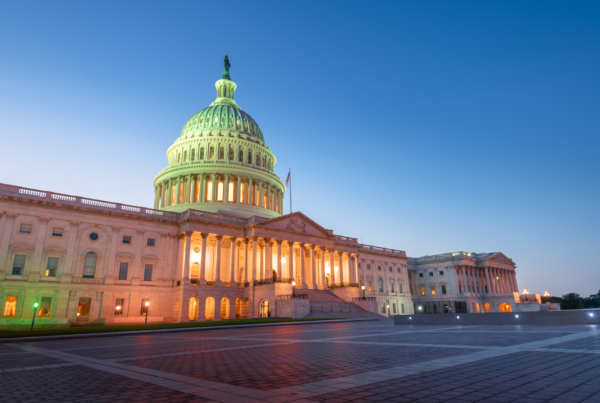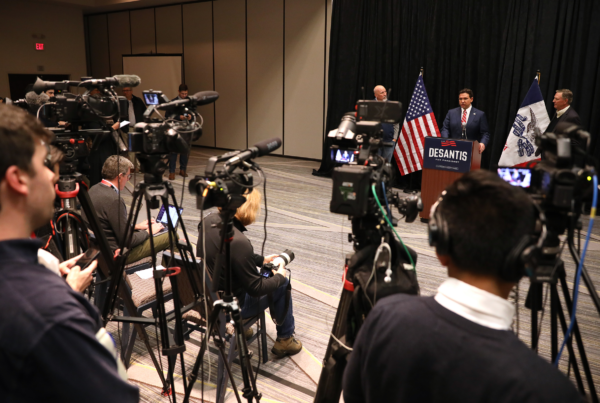Spending by outside groups up to $120 million since September 1
(MIDDLETOWN, CT) Oct. 27, 2010 — As of October 20, spending on advertising in U.S. Senate, House and gubernatorial races has eclipsed $1 billion, a historic figure by any measure. Almost $620 million of that spending has been since September 1, and $250 million was in the past two weeks alone. As a point of comparison, the Wesleyan Media Project estimated roughly $220M was spent on advertising between January 1 and September 15. That means in the last two weeks alone, spending overtook the first nine and a half months of the year. Year-to-date spending is almost 50 percent greater in House races (from almost $142M in 2008 to over $210M today) and has almost doubled in Senate races compared to 2008 (from $157.5M to $314M).
***To view entire release as a pdf, click here.
***For tables, select your format (xls and xml have more information): pdf xls or zipped xml
Almost any way you look at it, the advertising is up—and way up—this year,” said Travis Ridout, co-director of the Wesleyan Media Project and associate professor of political science at Washington State University. “That’s true for spending and the volume of ads, it is true for House and Senate races, and it is true whether one is looking at candidate or interest group spending,” he explained.
Table 1 shows spending in Senate races for the same September 1 to October 20 time period in both 2008 and 2010. The only category of ad spending that is down from 2008 is party spending, but if one takes into account coordinated expenditures with the campaigns, party spending is flat. In the two week period from October 7 to October 20, an estimated $70 million was spent on ads in Senate races.
Table 1. Advertising in U.S. Senate Races, 9/1-10/20*
Table formats: pdf xls or zipped xml
Table 2 shows the same information for U.S. House races. Increases in spending and ad volumes are just as dramatic as in the Senate races, with total ad volume up 73 percent over 2008 and ad total ad spending up 79 percent. In the two-week period between October 7 and October 20, an estimated $69 million was spent on advertising in U.S. House races.
Table 2. Advertising in U.S. House Races, 9/1-10/20*
Table formats: pdf xls or zipped xml
Interest group activity has especially increased in House races – by more than 200 percent when measured through airings and more than 250 percent when measured through spending. As a proportion of all activity, interest group ads account for almost double what they did in 2008,” said Michael Franz, co-director of the Project and associate professor of government at Bowdoin College. “On the Senate side, we’re seeing a smaller increase in airings (up 30 percent) and a sizeable increase in spending (up almost 150 percent) but as a proportion of all airings, interest groups account for roughly the same amount of the air war as they did last cycle.”
The nation’s most expensive Senate races are found in California, Illinois, Florida and Pennsylvania where more than $15 million has been spent on advertising since September 1 (Table 3). In terms of the total volume of ads, however, Nevada, Wisconsin and Florida have the nation’s most intense U.S. Senate races. Democrats and Republicans are fairly well matched in terms of ad volume in many of the states, though the Republican has more than a 2 to 1 advantage in ad volume over the Democrat in both Missouri and Florida’s three-way Senate race. The table also includes the percentage of total airings that were sponsored by interest groups. In Missouri, Colorado, and Nevada, outside groups have aired about 30 percent of all pro-candidate ads. In California and Pennsylvania the number is past 20 percent.
Table 3. Most Expensive Senate Races, 9/1-10/20*
Table formats: pdf xls or zipped xml
Table 4 shows the nation’s most expensive U.S. House races. They are found in Michigan’s 7th district (held by Democrat Mark Schauer), Nevada’s 3rd district (held by Democrat Dina Titus) and Virginia’s fifth district (held by Democrat Tom Perriello). All three representatives are serving their first terms in office. In MI-7, outside groups have sponsored nearly 31 percent of the 11,000 ads since September 1. In four other races in Table 4, outside groups have sponsored more than 1 in every 5 ads.
Table 4. Most Expensive House Races, 9/1-10/20*
Table formats: pdf xls or zipped xml
Table 5 displays the most expensive gubernatorial races. California continues to outpace all others weighing in at nearly $60M since September 1. The three-way Florida contest follows with nearly $36M. Texas clocks in at almost $25M, with New York, Massachusetts, Ohio, Wisconsin, Pennsylvania and Maryland all at eight figures. Notably, in the Wisconsin race, interest groups have sponsored over 43 percent of the 27,000 airings, which accounts for a larger share of the advertising than either individual candidate.
Table 5. Most Expensive Gubernatorial Races, 9/1-10/20*
Table formats: pdf xls or zipped xml
Table 6 shows the top independent groups that are spending on political advertising in support of or opposition to a candidate. Republican-leaning groups dominate the top of the list, which is headed by the Republican Governor’s Association. This group is followed closely by the U.S. Chamber of Commerce, which has spent an estimated $15.7 million since September 1 in support of Republican candidates and an estimated $1.2 million in support of Democratic candidates. All told, outside groups have spent $120 million on advertising for candidates since September 1. The majority of that money ($85 million) has benefited Republicans.
Particularly noteworthy is the fact that 6 out of the top 10 interest group spenders are non-profit groups that do not have to disclose their donors, and were we to exclude the Republican Governor’s Association, it would be 7 of the top 10 as number 11 is Americans for Job Security,” said Erika Franklin Fowler, co-director of the Project and assistant professor of government at Wesleyan University. “That is nearly $40M dollars of advertising activity in top races for which the public will be unable to track the source.”
Table 6. Top 10 Interest Group Spenders, 9/1-10/20*
Table formats: pdf xls or zipped xml
By all accounts advertising in 2010 is one for the history books,” concluded Fowler.
The Wesleyan Media Project provides real-time tracking and analysis of all political television advertising in real-time. Housed in Wesleyan’s Quantitative Analysis Center – part of the Allbritton Center for the Study of Public Life – the Wesleyan Media Project is the successor to the Wisconsin Advertising Project, which disbanded in 2009. It is directed by Erika Franklin Fowler, assistant professor of government at Wesleyan University, Michael M. Franz, associate professor of government at Bowdoin College and Travis N. Ridout, associate professor of political science at Washington State University.
The Wesleyan Media Project is supported by grants from John S. and James L. Knight Foundation, The Sunlight Foundation, Wesleyan University, and its partner institutions Bowdoin College and Washington State University. Data provided by Kantar Media/CMAG with analysis by the Wesleyan Media Project using Academiclip, a web-based coding tool.
For more information contact:
David Pesci at 860-685-5612 or dpesci at wesleyan.edu
Erika Franklin Fowler at 860-685-3407 or efowler at wesleyan.edu
Michael M. Franz at 207-798-4318 or mfranz at bowdoin.edu, or
Travis N. Ridout at 509-335-2264 or tnridout at wsu.edu
###



